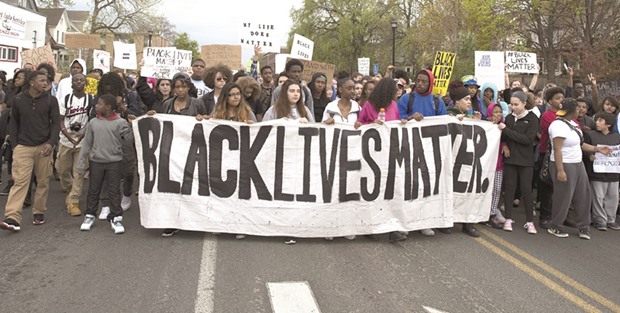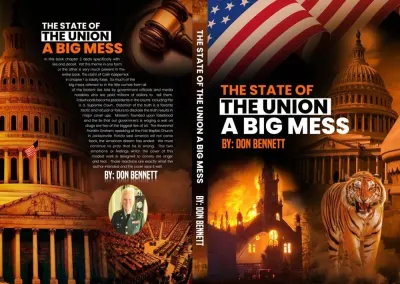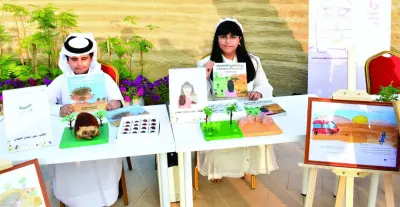For 21 years, Lisa Shorney’s book club has focused on fiction, but in September they made an exception.
They read Between the World and Me, African-American journalist Ta-Nehisi Coates’ searing indictment of racism in America, told in the form of a letter to Coates’ teenage son, a young man raised far from the mean streets where his father came of age but nevertheless grappling with many of the same issues: racism, police violence, the legacy of centuries of political and economic inequality.
“Everybody said that was one of the best discussions we’ve had,” says Shorney, 56, of Glen Ellyn, Illinois.
“We live in a very suburban, white bubble out here. My friends, for the most part, we’re pretty liberal, and even so, I remember one girl who’s so bright, saying, ‘This can’t be true.’ And I said, ‘What do you mean?’ And she said, ‘Well, it’s so much worse than I thought.’”
Shorney, who gave Between the World and Me to friends and family for Christmas, is part of an emerging trend on best-seller lists, in book clubs and at libraries and publishing houses. At a time when a string of high-profile shootings and deaths of African-Americans is inspiring public activism and private soul-searching, readers are increasingly turning their attention to what some are calling the Black Lives Matter reading list — a series of influential books that highlight racial injustice.
The list is fluid but almost always includes three essentials. In addition to Between the World and Me, a National Book Award Winner and longtime best-seller, there’s also the surprise hit The New Jim Crow: Mass Incarceration in the Age of Colorblindness, legal scholar Michelle Alexander’s argument that mass incarceration is the new legalised segregation. The book debuted in 2010 but didn’t hit the New York Times best-seller list until 2012.
Pulitzer Prize-winner Isabel Wilkerson’s The Warmth of Other Suns: The Epic Story of America’s Great Migration, an unstinting look at the trials and triumphs of Southern African-Americans who migrated north in the 20th century, is the third of the big three.
But readers, editors and bookstore owners also point to a book of poetry, Citizen: An American Lyric by Claudia Rankine, which is currently climbing the best-seller lists. And they say there are signs of renewed interest in old favourites such as the 1990s best-seller, Why Are All the Black Kids Sitting Together in the Cafeteria?: And Other Conversations about Race.
“Those books are super-popular,” says Jo Anne Willis, manager of the Chicago Public Library’s Austin branch.
“If you would just take a casual look at our catalogue, those are the books you have to place a hold for; there’s a waiting list. That’s one way you can tell how popular they are. But also just in general conversation with my patrons, those books are hugely popular. People find them to be super-relevant, and they generate a lot of discussion.”
Kris Kleindienst, co-owner of Left Bank Books in St. Louis, which launched its Black Lives Matter reading list after the death of Michael Brown in 2014, has also noticed an uptick in interest. And Diane Wachtell, executive director of The New Press, which publishes The New Jim Crow, says the book’s success has been fuelled, in part, by outrage over police shootings.
The book, which launched in 2010 with an initial printing of just 3,200 copies, got an early boost from an eloquent author, supportive black churches and some TV coverage, Wachtell says.
But in 2012, when 17-year-old Trayvon Martin was shot and the Black Lives Matter movement was born as a hashtag of protest on social media, it became clear that a new dynamic had emerged.
“It is with really mixed emotions that (the author) Michelle and I communicate about the book going up and up the best-seller list, because its rise and fall correlate almost exactly to horrible things happening in the world,” Wachtell says.
“Whenever there’s a front-page story about police brutality or an unarmed black man being shot without provocation by the police, the book goes up the list.”
Readers interviewed by the Tribune gave a wide range of reasons for their interest in the books, from Shorney, who was raised by a mother who was passionate about racial justice and equal opportunity, to Mike Obiala, 69, of Lake Forest, Illinois, who said he couldn’t quite remember why his book club chose The Warmth of Other Suns, but was glad they did.
Obiala, who is originally from the South Side, says his family sold the house where he grew up when black people moved into the neighbourhood.
“As I’ve gotten older, I’ve gotten much, much, much more liberal,” he says. “I’m fortunate I have many many black acquaintances and friends (who) I probably wouldn’t have enjoyed in my teens and twenties. So from that standpoint, the book was reinforcing what my beliefs have tended to become: that the African-American people were treated so, so unfairly for absolutely no reason. They certainly deserved a better shake than many of them got. All of us intellectually know that, but actually reading about that, and being able to relate to some of the people really drives the point home.”
Kristin Martin, 43, of Chicago, says that her book group, which reads very eclectically, wanted to include a book that was politically timely. When they chose their list for the year in December, three out of seven members nominated Between the World and Me, so now the book is on the schedule for 2016.
Willis, who leads a Chicago Public Library book discussion group in the largely African-American Austin neighbourhood, says the books spark lively and far-ranging conversations, with senior citizens telling 20-somethings their personal stories, of, say, growing up in the South, and younger members talking about their experiences at Black Lives Matter protests.
“In general, the reason we like to read these books and discuss these books is because they relate to our own lives,” says Willis. “They make us think, we get to know the other person’s viewpoint and, ultimately, I think it creates community — a sense of sistership, or fellowship.”
Shorney, a bookseller at Anderson’s Bookshop in Naperville, says she’s always been concerned about racism. But her commitment deepened after a May 2015 “racial reconciliation” bus trip through the American South that brought members of her mostly white church together with members of a predominantly African-American church from the South Side.
“The main thing I learned on that trip is that it’s not enough to say, ‘I am not a racist.’ You have to be anti-racist. You have to do something,” she says.
When she heard about Between the World and Me, she knew she had to read it. She suggested it to her book group, and led the discussion.
“Because we know each other so well, it’s a safe place,” she says of the book club. The discussion was honest and emotional, with one member saying she didn’t know many black people. It wasn’t an easy conversation to have, Shorney says, but it was a valuable one.
Not long after The New Jim Crow was published in 2010, a man approached Wachtell at a dinner party. He didn’t know about her connection to the book, but he did know she worked in publishing, and he had a question. He’d just read a life-changing book about systemic racism in the criminal justice system, and he loved that book, but he just didn’t see how such a serious book on such a difficult topic could ever succeed commercially.
Who would publish a book like that?
“Well, actually I published that book,” Wachtell said.
A lot has changed since then — The New Jim Crow, has been on best-seller lists for more than 100 weeks and sold 600,000 copies. But whether sales of such books will continue to grow is an open question, Wachtell says.
“There is a feeling among people who have been working in this field for 20, 30 years, that we have an opportunity and a window to effect some real change: There is a receptivity that is unlike anything we have seen for decades, but it could end at any moment, and we’d better hustle,” she says.
Shorney feels a sense of urgency as well.
“You can’t just sit in our house and read your book, you’ve got to take it to the next (level), whether that is reaching out and helping in a tutoring programme, or maybe because your awareness is raised you see things you didn’t see before — right there — and you can make a difference,” she says. “Any small thing is a step forward.”—Chicago Tribune/TNS

MAKING A STATEMENT: The Black Lives Matter movement.


